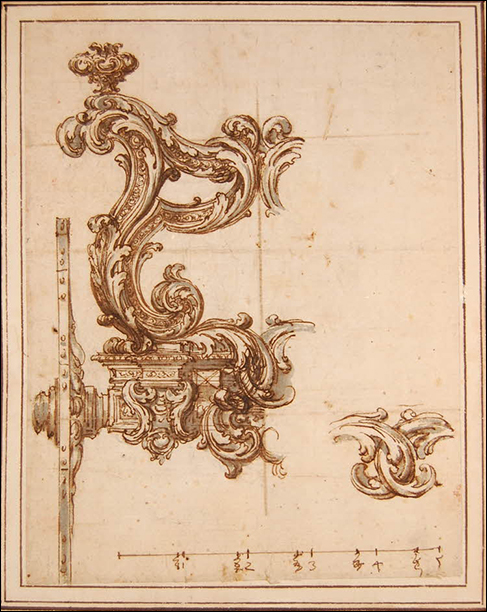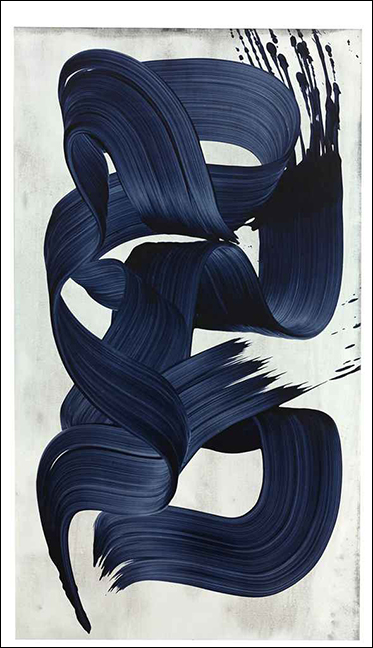Baroque as Abstraction
“Baroque is abstract art par excellence…”
-Gilles Deleuze, The Fold: Leibniz and the Baroque
Ambiente barroco: Life and the Arts in the Baroque Palaces of Rome @ The Bard Graduate Center for Studies in the Decorative Arts from March 11 through June 13, 1999. 18 West 86th Street, Tel. (212) 501-3072.

The Bard exhibition of Roman Baroque decorative art reflects a fascination with gesture and light that is distinctly contemporary. Stefanie Walker curated the exhibition with the belief that Gian Lorenzo Bernini, Pietro da Cortona, and Francesco Borromini largely influenced the evolution of period decorative art. These influences are certainly present, but to the extent that decorative artists were liberated from depicting the figure, they began to carry decorative motifs into the realm of abstraction. A striking affinity between Baroque decoration and the work of a contemporary artist is apparent between the design for a carriage rear by Johann Paul Schor and gestural flourishes of the painter James Nares. Schor made use of a floral-vegetal motif to transform the hard structure of a carriage into a network of vines or garlands. He carries the viewer’s eye around his design by means of a series of leaves or crests that seethe within the overall linear design. Nares, on the other hand, paints with a gestural calligraphy and the striations in his rapidly executed brushstrokes serve a similar function to interior forms of their Baroque counterparts.
Baroque decoration sought to negate hard structure, and that tendency is illustrated in a console from the Palazzo Ruspoli (intended for this exhibition but stolen last month from the restorer!). The legs of the table become massive, surging vines that grow into convoluted forms and ultimately support a multicolored marble tabletop. The legs touch the floor so artfully that they seem to levitate above the ground. It is this sense of levitation that constitutes its strongest affinity with Nares’ work. A single Nares brushstroke can describe great depth and movement without a hint of weightiness.

A fascination with light and reflection unites Baroque decorative schemes with luminous matrices of contemporary painter Terry Winters. The most powerful Baroque example is the Colonna Gallery, documented in this exhibition by period artist Salvatore Colonelli Sciarra. In the hall paintings were hung according to size and orientation (rather than subject matter) along the massive corridor stacked one atop another, side by side, and between rectangular bays of windows. The effect of this hall, viewed from one end of the corridor, was essentially that of a perspectival grid punctuated by points of color, direct light, and reflected light.
It is just this sort of grid that has long fascinated Terry Winters. In Winters’ painting it emerges as either a grid or web that defines the space around more organic abstract figuration. Like the effect of the Collona Gallery, his square matrix and perspective holding lines are obscured by the presence of unlikely color effects, such as the occasional green marks in his 1996 work Rates of Change. Winters’ lines do not suggest hard geometry as they are rendered with a brush, and feather off into the ground. In the same way, the rectangular paintings, windows, and mirrors of the Baroque hall are by their nature at odds with their own exterior geometry.
The Bard exhibition conveys a sense of the spectacle of court life. Theater set designs, genre painting, musical instruments, textiles, furniture, designs for folded napkins and even sugar sculpture are present in this handsomely curated survey. Although still grounded in representation, Baroque decorative artists developed a stylized vocabulary that is refreshing in light of the abstract development of art in our own century.
© Daniel Rothbart, 2000.